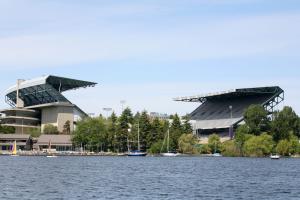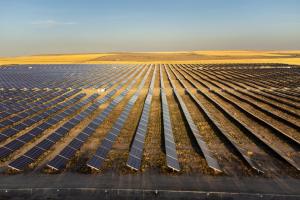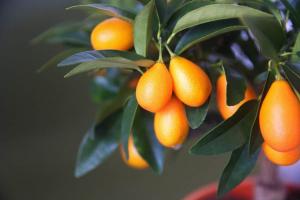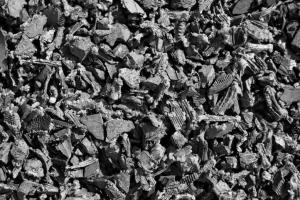8 Reasons to Think Twice Before Planting a Maple Tree
Thinking about planting a maple tree in your yard? Well, hold on just a minute! While maples may seem like a popular choice for many homeowners, there are some compelling reasons why you might want to think twice before digging that hole and planting those seeds or saplings. While they may have their charms, maples also come with their fair share of headaches and hassles that might just make you reconsider your landscaping plans. Let’s look at some reasons why you might want to not plant a maple tree in your yard.
1. It Could Be Invasive
One compelling reason to steer clear of planting maple trees in your yard is the risk of them becoming invasive. While maple trees are beloved for their striking foliage and vibrant autumn colors, certain species can exhibit invasive tendencies that may lead to a host of problems for both your yard and the local environment.
The primary concern lies in the silver maple (Acer saccharinum) and Norway maple (Acer platanoides) varieties. These varieties have earned notoriety for their invasive behavior. These trees are often fast growers and prolific seed producers. They have seeds that can be carried far and wide by the wind. This prolific seed dispersal can lead to maple trees sprouting in unintended areas, such as neighboring yards, parks, and natural habitats.
Maple trees can outcompete native plant species for resources like sunshine, water, and nutrients when they grow beyond their original planting places. This might endanger local wildlife that depends on native plants for food and shelter. This can upset the delicate biological balance of the ecosystems there. Additionally, invasive maples can crowd out desirable plants in your own yard. This makes it challenging to maintain a diverse and healthy landscape.
Also, invasive maple trees often have shallow, aggressive root systems that can wreak havoc on your property. These roots can infiltrate underground utilities, such as water pipes and sewage lines, causing costly damage and inconvenience. They may also crack sidewalks, driveways, and foundations, leading to expensive repairs.
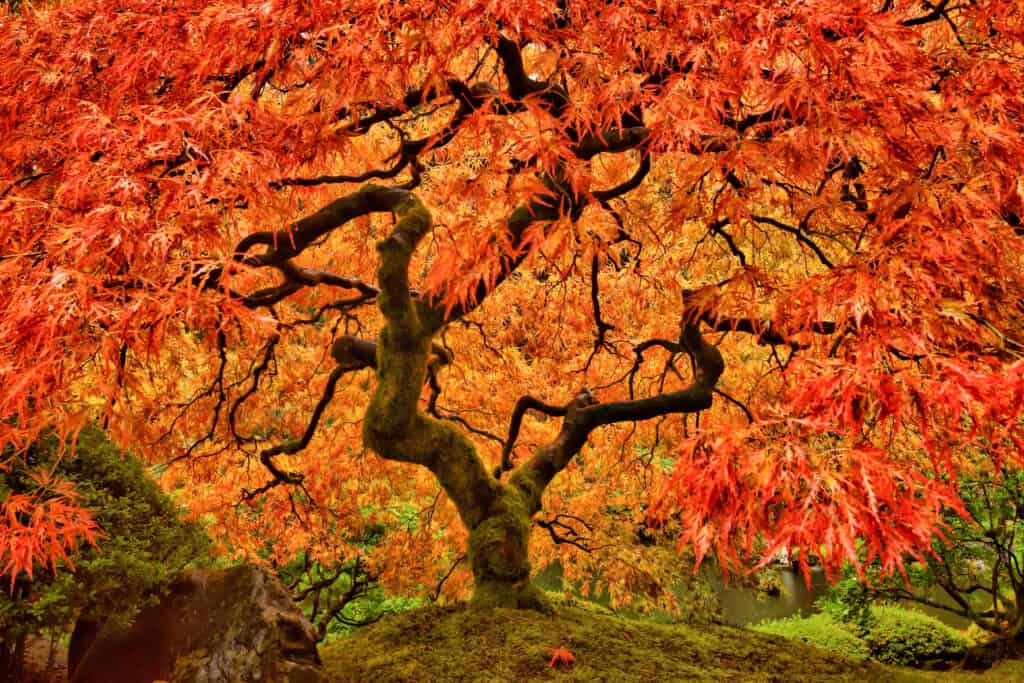
©Paula Cobleigh/Shutterstock.com
2. Not Enough Space
A significant reason to think twice about planting maple trees in your yard is their penchant for taking up a considerable amount of space. While maple trees can be majestic and beautiful, their size can be a double-edged sword for homeowners.
Maple trees are renowned for their large height and wide canopy, particularly some varieties like the sugar maple (Acer saccharum) and red maple (Acer rubrum). These trees may get fairly big. Mature individuals frequently reach heights of 60 to 80 feet and widths of 30 to 40 feet. If you have a tiny yard or want to grow other plants below the tree, the intense shadow that this large canopy may provide may be an issue.
The shade created by mature maple trees can inhibit the growth of grass, flowers, or other vegetation beneath them due to limited sunlight penetration. This can lead to patches of bare soil and create challenges for landscaping and gardening efforts. Moreover, fallen leaves from these large trees can accumulate in great quantities during the autumn months, requiring substantial cleanup efforts.
Also, as mentioned earlier, the extensive root systems of maple trees can also pose issues. Their roots tend to spread widely, often competing with other plants for water and nutrients. In some cases, the roots can surface. This can make mowing and lawn maintenance more difficult and cause damage to sidewalks or driveways.
Before planting a maple tree, it’s essential to consider the size of your yard and the potential consequences of a tree that may grow to dominate the space. If space is limited, you might want to explore smaller tree species. You could also consider planting the maple in a location where its size won’t pose such a challenge.
3. Difficult Maintenance
A compelling reason to think twice about planting maple trees in your yard is the challenging maintenance they often demand. While maple trees can be a picturesque addition to your landscape, their care and upkeep can prove to be more demanding than anticipated.
One of the primary maintenance concerns with maple trees is their propensity to produce an abundance of leaves. In the fall, maple trees shed their leaves, covering your yard in a thick carpet of foliage. It might take a lot of time and effort to rake and remove these leaves, especially if your maple tree is big. Neglecting this task may cause unattractive leaf piles and even grass damage.
Also, a number of pests and diseases can affect maple trees and need frequent inspection and treatment. Common problems include aphids, scale insects, and fungal diseases like powdery mildew and tar spot. If left unchecked, these issues can harm the health and aesthetics of your maple tree.
Maple trees can also have extensive root systems that may disrupt your yard or even damage underground utilities like pipes and cables. Their roots can protrude above the ground, making lawn maintenance more challenging and potentially creating trip hazards.
Moreover, maple trees may require pruning to maintain their shape, remove dead branches, or control their growth. Pruning can be a skill-intensive task that should be done carefully to avoid harming the tree.
Finally, the large size of some maple tree species can create an ongoing challenge in terms of canopy management and tree care. Trimming branches or managing the tree’s height may necessitate the assistance of professionals, incurring additional maintenance costs.
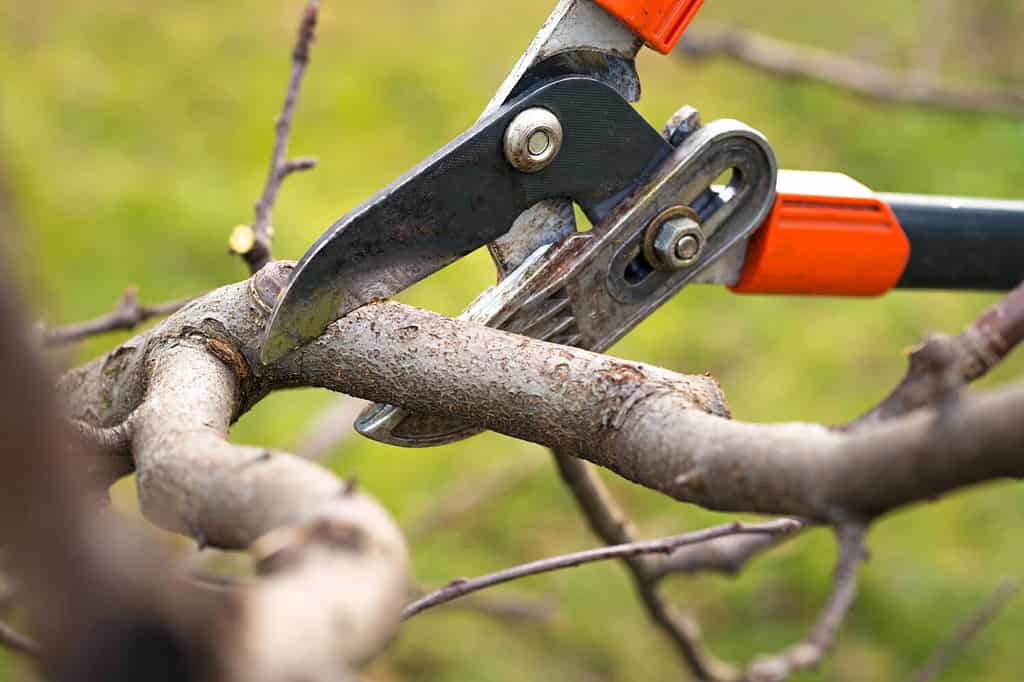
©ueuaphoto/Shutterstock.com
4. Allergy Issues
Another compelling reason to reconsider planting maple trees in your yard is their potential to trigger allergies. While maple trees are known for their stunning foliage and vibrant colors, they also produce pollen that can be a significant allergen for some individuals.
Maple trees belong to the genus Acer, and several species within this genus are commonly planted in yards and urban landscapes. Among them, the silver maple and the red maple are frequent culprits when it comes to pollen production. These trees release pollen into the air as part of their reproductive process, typically in the spring.
The airborne pollen from maple trees can be problematic for people who suffer from seasonal allergies. Allergy symptoms, such as sneezing, runny or stuffy noses, itchy or watery eyes, and respiratory discomfort, can be brought on by inhaling maple pollen. The height of the maple tree pollen season, which varies depending on where you live but often happens in the spring, can make these symptoms very uncomfortable.
Also, as maple trees are pollinated by the wind, their pollen is small and portable. This makes it simple for the wind to transport it across great distances. This can lead to a widespread distribution of maple pollen, affecting not only your yard but potentially neighboring areas as well. Allergy sufferers in your community may experience discomfort due to the presence of maple trees in your yard.
If you or your family members have allergies, planting maple trees in your yard may exacerbate these issues and limit the enjoyment of your outdoor space. This is especially so during the spring allergy season. It’s essential to weigh the aesthetic appeal of maple trees against the potential health concerns for your household and those around you.
5. Maple Leaves are Messy
The messiness of maple trees’ leaves is one more compelling argument against putting them in your yard. While maple trees are well known for their beautiful foliage and vivid hues, they can also be quite the muck makers in your outdoor area.
Maple trees, like the sugar maple and red maple, boast lush, broad leaves that provide ample shade during the summer months. However, as autumn approaches, these leaves undergo a dramatic color change and ultimately fall to the ground. This process results in a substantial quantity of leaves covering your yard, creating an extensive cleanup task.
Raking and collecting the fallen leaves from maple trees can become a time-consuming chore. If not attended to promptly, these leaves can accumulate in drifts, covering your lawn and garden beds. Besides being unsightly, the buildup of leaves can smother your grass and other vegetation, impeding their growth and health. Moreover, rotting leaves can create a breeding ground for pests and diseases, potentially causing additional problems for your yard.
The messiness of maple leaves doesn’t end with their fall from the tree. Even during the growing season, they can be a nuisance. When wet, maple leaves can stick together, forming a dense mat that is slippery and difficult to walk on. This can pose safety hazards for you, your family, and guests in your yard.
Just as well, maple leaves can clog gutters and downspouts. This can lead to water drainage issues and potential damage to your home’s foundation. Keeping your gutters clear of maple leaves can become a recurring maintenance task.
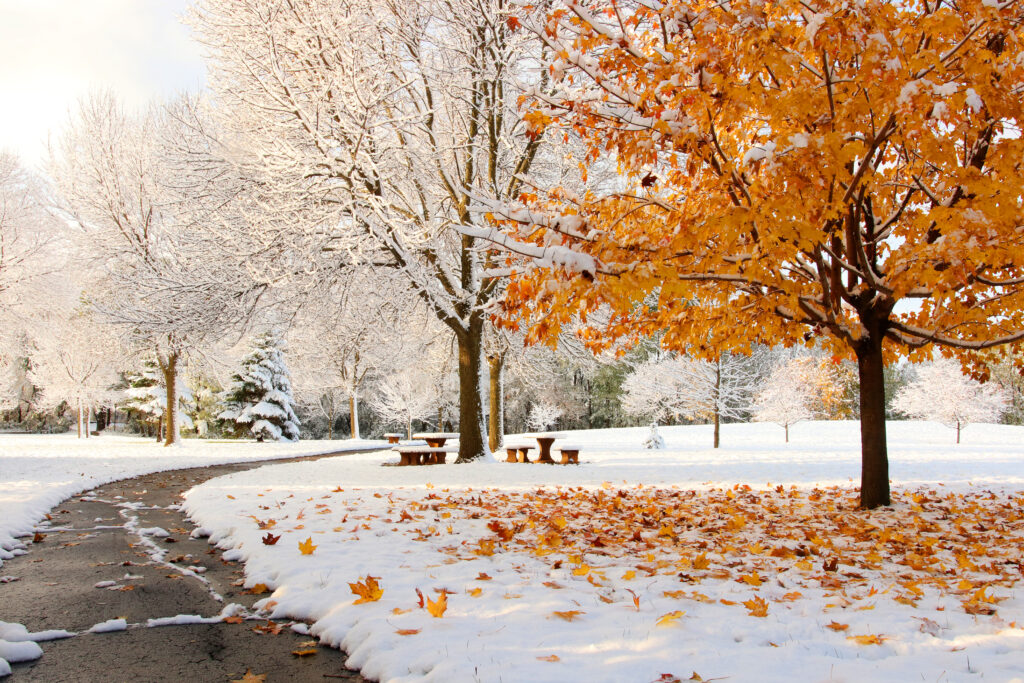
©UWMadison/iStock via Getty Images
6. It Can Provide Too Much Shade
You should reconsider planting maple trees in your yard because of their potential to cast an excessive amount of shade. Despite the fact that maple trees are prized for their exquisite appearance and colorful foliage, their dense canopies can sometimes provide an atmosphere that is too shaded for some environments.
Red and sugar maples in particular are renowned for having big, wide canopies that offer a lot of shade. When it prevents sunlight from reaching the ground underneath the tree, this feature—while often desirable—can turn into a problem.
It might be difficult to maintain a beautiful and varied environment when your yard’s grass, flowers, and other plants aren’t growing well due to inadequate sunshine. Permanently shaded areas beneath a maple tree might eventually turn into bare patches of ground. this could give your yard an unsightly and uneven appearance.
Furthermore, the dense shade created by maple trees can impact the overall aesthetics of your outdoor space. It can make your yard feel gloomy and restrict the use of certain areas for recreational activities, gardening, or even sunbathing. Also, if you have solar panels on your home, excessive shade from a nearby maple tree can reduce their efficiency and energy generation.
Maple trees can also influence the microclimate of your yard by cooling it significantly in hot weather. While this can be advantageous during summer months, it can be a disadvantage if you’re trying to create a warm and sunny environment.
Before planting a maple tree, it’s essential to carefully evaluate your yard’s sunlight needs and how the tree’s growth will affect it. If you prefer a more sunlit and versatile outdoor space, you may want to consider other tree species that provide shade without creating excessive shadow.
7. Your Soil or Climate Isn’t Ideal
While maple trees are beloved for their striking foliage, they can be somewhat particular about their environmental requirements.
Maple trees generally thrive in specific soil conditions. They prefer well-drained soil that is rich in organic matter and slightly acidic to neutral pH levels. If your yard’s soil doesn’t meet these criteria, it can lead to stunted growth, poor health, and a lack of the vibrant foliage that maples are known for. It’s important to consider whether your soil can support the specific species of maple you intend to plant.
Moreover, the climate of your region plays a crucial role in the success of maple trees. These trees typically prefer temperate climates with cold winters and mild summers. They are particularly well-suited to regions with distinct seasons. If you live in an area with a tropical or arid climate, the extreme heat or prolonged drought periods can stress and weaken maple trees. They may become more susceptible to pests and diseases in such conditions.
In areas prone to strong winds, maple trees can also be vulnerable. Their broad canopies can catch the wind like a sail. This could lead to breakage of branches or even uprooting in severe cases.
Another aspect to consider is the availability of water. Maple trees require consistent moisture, especially during their early years of growth. If your yard’s climate is characterized by frequent droughts or water restrictions, it can be challenging to provide the necessary hydration for healthy maple tree development.
8. Disease Susceptibility
Our last compelling reason to reconsider planting maple trees in your yard is their susceptibility to diseases. Maple trees can be vulnerable to a range of diseases that can affect their health and appearance.
One common ailment that afflicts maple trees is anthracnose. Anthracnose is a fungal disease that often manifests as dark, irregular-shaped spots on the leaves. This can lead to severe leaf drop. This disease is particularly prevalent during wet, cool spring weather. While anthracnose rarely kills mature trees, it can weaken them, making them more susceptible to other stressors.
Maple trees are also susceptible to powdery mildew, another fungal infection. Powdery mildew can cover the leaves with a white, powdery substance, inhibiting photosynthesis and affecting the tree’s overall vitality. Although not usually fatal, it can affect the tree’s aesthetic appeal and reduce its vigor.
Verticillium wilt is a more severe condition that can impact maple trees. This soil-borne fungal disease can block the tree’s vascular system, causing wilting, yellowing of leaves, and dieback of branches. In severe cases, it can lead to the death of the tree. This disease can persist in the soil for years, making it challenging to eradicate once established.
These trees are also susceptible to tar spot, a visually unappealing but generally harmless fungal disease. Tar spot causes dark, tar-like spots to form on the leaves, which can detract from the tree’s aesthetic value.
Summary of Reasons to Think Twice Before Planting a Maple Tree
| # | Reason |
|---|---|
| 1 | It Could Be Invasive |
| 2 | Not Enough Space |
| 3 | Difficult Maintenance |
| 4 | Allergy Issues |
| 5 | Maple Leaves are Messy |
| 6 | It Can Provide Too Much Shade |
| 7 | Your Soil or Climate Isn’t Ideal |
| 8 | Disease Susceptibility |


